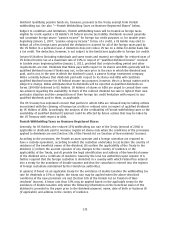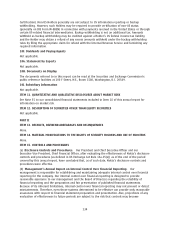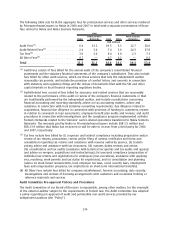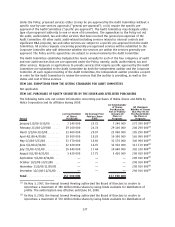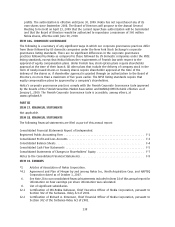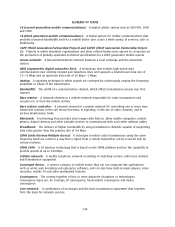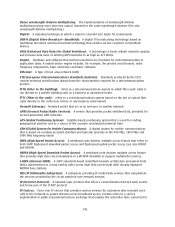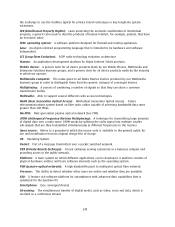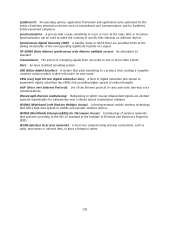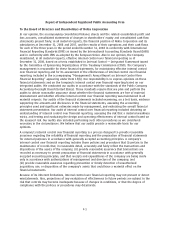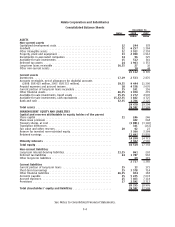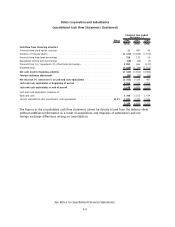Nokia 2008 Annual Report Download - page 141
Download and view the complete annual report
Please find page 141 of the 2008 Nokia annual report below. You can navigate through the pages in the report by either clicking on the pages listed below, or by using the keyword search tool below to find specific information within the annual report.GLOSSARY OF TERMS
2G (second generation mobile communications):
A digital cellular system such as GSM 900, 1800
and 1900.
3G (third generation mobile communications):
A digital system for mobile communications that
provides increased bandwidth and lets a mobile device user access a wide variety of services, such as
multimedia.
3GPP (Third Generation Partnership Project) and 3GPP2 (Third Generation Partnership Project
2):
Projects in which standards organizations and other related bodies have agreed to cooperate on
the production of globally applicable technical specifications for a third generation mobile system.
Access network:
A telecommunications network between a local exchange and the subscriber
station.
ADSL (asymmetric digital subscriber line):
A technology that enables highspeed data
communication over existing twisted pair telephone lines and supports a downstream data rate of
1.5—8 Mbps and an upstream data rate of 16 kbps—1 Mbps.
Analog:
A signaling technique in which signals are conveyed by continuously varying the frequency,
amplitude or phase of the transmission.
Bandwidth:
The width of a communication channel, which affects transmission speeds over that
channel.
Base station:
A network element in a mobile network responsible for radio transmission and
reception to or from the mobile station.
Base station controller:
A network element in a mobile network for controlling one or more base
transceiver stations in the call setup functions, in signaling, in the use of radio channels, and in
various maintenance tasks.
Bluetooth:
A technology that provides shortrange radio links to allow mobile computers, mobile
phones, digital cameras and other portable devices to communicate with each other without cables.
Broadband:
The delivery of higher bandwidth by using transmission channels capable of supporting
data rates greater than the primary rate of 9.6 Kbps.
CDMA (Code Division Multiple Access):
A technique in which radio transmissions using the same
frequency band are coded in a way that a signal from a certain transmitter can be received only by
certain receivers.
CDMA 2000:
A 3G wireless technology that is based on the CDMA platform and has the capability to
provide speeds of up to 144 Kbps.
Cellular network:
A mobile telephone network consisting of switching centers, radio base stations
and transmission equipment.
Converged device:
A generic category of mobile device that can run computerlike applications
such as email, web browsing and enterprise software, and can also have builtin music players, video
recorders, mobile TV and other multimedia features.
Convergence:
The coming together of two or more disparate disciplines or technologies.
Convergence types are, for example, IP convergence, fixedmobile convergence and device
convergence.
Core network:
A combination of exchanges and the basic transmission equipment that together
form the basis for network services.
140




